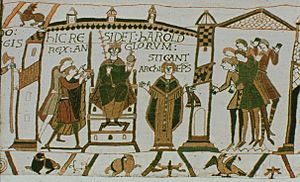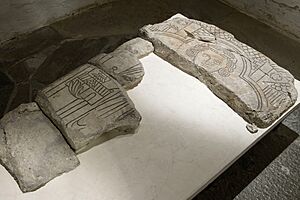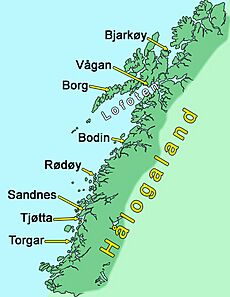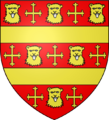House of Godwin facts for kids
Quick facts for kids House of Godwin |
|
|---|---|
| Royal and princely house | |
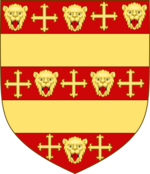
A coat of arms often linked to Harold Godwinson, King of England. This represents the royal part of the family.
|
|
| Parent family | House of Wessex (?) |
| Place of origin | Sussex |
| Founder | Godwin, Earl of Wessex |
| Final ruler | Harold Godwinson (England, 1066) Inge Bårdsson (Norway, 1217) |
| Seat |
|
| Titles |
|
| Connected families |
|
| Cadet branches |
|
The House of Godwin was a very important Anglo-Saxon family in England. They were one of the most powerful noble families in the 50 years leading up to the Norman Conquest in 1066. Their most famous member was Harold Godwinson, who became King of England for a short time in 1066.
The family's power began with Earl Godwin. He rose from a less known background with the help of King Cnut and was given the Earldom of Wessex around 1018–1019. Godwin kept his position under Cnut's sons, Harold Harefoot and Harthacnut. His power grew even more when King Edward the Confessor made Godwin's two eldest sons, Sweyn and Harold, earls.
The family faced a brief exile in Flanders from 1051 to 1052 but returned to power. After Godwin's death in 1053, his sons held important earldoms across England. Harold, in particular, became the most powerful man in the country, even more influential than the king. When Edward the Confessor died without children in 1066, Harold Godwinson became king.
Harold won a great victory against the Norwegian king Harald Hardrada and his own brother Tostig Godwinson at the Battle of Stamford Bridge. However, just three weeks later, Harold was defeated and died at the Battle of Hastings. This event marked the end of Anglo-Saxon rule in England. Later generations of the Godwin family spread across Northern Europe. Through their female relatives, the Godwins became ancestors of many royal families, including the Grand Princes of Kiev and the modern British royal family.
Some male descendants of the House of Godwin lived in Norway after 1067. They became part of Norway's most important noble families. King Olaf III of Norway settled Skule Kongsfostre, a son of Earl Tostig, at the Rein estate in Trøndelag. This started the Rein dynasty, which included King Inge II of Norway and Duke Skule Bårdsson.
Earl Tostig's younger son, Ketil Hook, was given the Torgar estate in Hålogaland. He married a granddaughter of a chieftain, starting the younger Torgar dynasty. King Harold Godwinson's son, Harold Haroldson, also joined the Norwegian king's court. His descendants might be the many Godwins found in Eastern Norway from the 13th century.
As earls, the Godwin family had great power, almost like independent rulers. They had their own group of loyal followers and soldiers. Historians describe Godwin and his family as one of the most famous and powerful noble houses in England during the 11th century.
Contents
The Godwin Family's Beginnings
Who Was Godwin's Father?
Godwin, Earl of Wessex, the family's namesake, was the son of Wulfnoth. This Wulfnoth was likely Wulfnoth Cild, a nobleman from Sussex. In 1009, Wulfnoth Cild was accused of crimes and left the service of King Æthelred the Unready with 20 ships.
Some historians believe Wulfnoth Cild was related to earlier kings of Wessex, which would connect the Godwins to the House of Wessex. However, most historians are unsure about this theory and consider Wulfnoth's family history unknown.
Godwin Under Danish Kings
Godwin's Rise to Power
Godwin was born around 993. He started his career by supporting Prince Æthelstan, a son of King Æthelred the Unready. After Æthelstan died, Godwin likely supported his brother, Edmund Ironside, against the Danish King Cnut.
When Cnut became King of England in 1016, Godwin managed to gain his trust. He became an important earl, first in part of Wessex, and then over the entire region by 1020. Around 1022, Godwin married Gytha, whose brother was also a Danish earl and Cnut's brother-in-law. By 1023, Godwin was one of the most powerful men in Cnut's kingdom.
After Cnut died in 1035, there was a disagreement over who should be king. Godwin supported Cnut's son Harthacnut, but another son, Harold Harefoot, became king. In 1036, Prince Alfred, another son of Æthelred, came to England. He was captured and sadly died shortly after. Godwin was suspected of being involved, and this suspicion stayed with him. When Harold Harefoot died in 1040, the new king, Harthacnut, made Godwin swear he was innocent.
Godwin's Rivalry with King Edward

A Power Struggle with King Edward
In 1042, King Harthacnut died. With Godwin's strong support, Edward the Confessor, Alfred's brother, became the new king. Godwin had a large family, including six sons and three daughters. King Edward needed to reward Godwin for helping him gain the crown.
Godwin's sons quickly gained power. His eldest son, Sweyn, became an earl in 1043. The next year, his second son, Harold, became the Earl of East Anglia. In 1045, Godwin's daughter, Edith, married King Edward. This meant the Godwin family held many important earldoms and had a strong influence at court. King Edward, who had lived outside England for a long time, had less power than the Godwins. This led to a struggle for control between the king and the powerful earls.
The family faced problems because of Sweyn's bad behavior. He allied with a Welsh king and caused a scandal, which led to him being outlawed by King Edward. Sweyn's lands were given to his brother Harold and cousin Beorn. Later, Sweyn returned and killed Beorn. He was outlawed again but was allowed to return in 1050.
King Edward tried to reduce the Godwin family's power. He gave Beorn's earldom to his own nephew. He also appointed an enemy of the Godwins as the Archbishop of Canterbury. In 1051, a dispute arose when King Edward ordered Godwin to punish the town of Dover. Godwin refused, and both sides gathered armies. Eventually, the Godwin family was banished from England. Godwin, his wife, and some of their sons fled to Flanders, while Harold and his brother Leofwine went to Ireland. Queen Edith, Godwin's daughter, was sent to a nunnery.
In 1052, Godwin and Harold returned to England with their own fleets. They gathered support and sailed to London. Godwin forced King Edward to agree to his terms. The family's earldoms were given back, Queen Edith returned, and many of the king's foreign friends were sent away. The Godwins had regained their power. However, Godwin died suddenly in 1053 while celebrating Easter.
Godwin's Sons Take Charge
Harold Becomes the Most Powerful Earl
After Godwin's death, his second son, Harold, became the Earl of Wessex. Harold's old earldom of East Anglia went to Ælfgar, the son of the Earl of Mercia. Godwin's eldest son, Sweyn, had gone on a pilgrimage and died in 1052.
Over the next few years, Harold's younger brothers also received earldoms. Tostig became Earl of Northumbria in 1055. Gyrth received a part of East Anglia, and Leofwine was given a new earldom including Kent and other counties. Harold also gained the earldom of Hereford. By this time, the Godwin family controlled almost all of England, except for Mercia. King Edward the Confessor was content to let the earls manage the country.
In 1063, Harold and Tostig led a successful invasion of Wales. They caused so much damage that the Welsh king, Gruffydd ap Llewelyn, was killed by his own men.
Harold's Oath to William
Around 1064, Harold was on a sea journey when a storm blew his ship to the coast of Ponthieu. The count of Ponthieu handed him over to William, Duke of Normandy. The reason for Harold's journey is not fully known. Some believe he was trying to arrange a marriage or secure the release of his younger brother Wulfnoth, who was a hostage in Normandy.
Harold joined William on a military campaign. He was then forced to swear an oath that he would support William's claim to be King Edward's heir. After this, Harold was allowed to return home.
Tostig's Exile and Harold's Coronation
Tostig's rule as Earl of Northumbria was not always popular. While he was good at foreign affairs, his strict measures made him disliked by his own nobles. In 1065, the Northumbrian nobles rebelled against Tostig, and he was forced to leave England. Harold did not want a civil war, so he did not try to put Tostig back in power.
Tostig, angry at his brother, went to Flanders and sought allies, including William of Normandy and the King of Norway. Harold, meanwhile, allied with the new Earl of Northumbria, Morcar, by marrying Morcar's sister, Ealdgyth.
At the beginning of 1066, Edward the Confessor died without children. He had named Harold as his heir. The English council, known as the witan, chose Harold to be king over Edward's young great-nephew, Edgar Ætheling. Harold was crowned the day after Edward's death. His reign lasted only nine months, and it was a time of great unrest.
Harold II: King of England
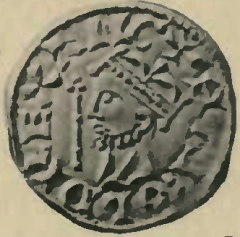
Challenges and Battles of 1066
As king, Harold faced threats from William, Duke of Normandy, and from the King of Norway. His own brother, Tostig, was the first to act. In the spring of 1066, Tostig launched raids on the English coast.
Harold prepared for an invasion from William in the south. However, in September, King Harald Hardrada of Norway, joined by Tostig, invaded northern England. They defeated a Northumbrian army and captured the city of York. Harold quickly marched his army north. On September 25, just five days after the battle of Fulford, Harold surprised Harald and Tostig's army at Stamford Bridge. He won a decisive victory, and both Harald Hardrada and Tostig were killed. Harold allowed the few survivors, including Tostig's sons, to return to Norway.
Three days later, Duke William landed his invasion fleet at Pevensey in Sussex. He then moved to Hastings and began to damage the countryside, which was part of Harold's old earldom. This forced Harold to march his tired army south quickly. On October 14, the two armies met near Hastings. Harold, along with his brothers Gyrth and Leofwine, led an exhausted army. They could not withstand the repeated attacks from the Normans. By the end of the day, Harold's army was completely defeated. All three brothers died, and Anglo-Saxon rule in England came to an end.
The Family Spreads Out
Life After the Norman Conquest
Only two members of the Godwin family were allowed to live peacefully in England under Norman rule. Edward the Confessor's widow, Edith, Godwin's daughter, lived quietly until her death in 1075. She kept all her private lands. Her niece, Gunhild, Harold Godwinson's daughter, lived in a nunnery until 1093. She later lived with Alan the Red and then his successor.
Godwin's youngest son, Wulfnoth, was held hostage in Normandy from 1051 until William the Conqueror's death in 1087. He was then moved to Winchester and may have become a monk, dying around 1094.
After the Battle of Hastings, Godwin's widow, Gytha, who was in her sixties, went to the south-west of England. She held large estates there, and resistance against the Norman Conquest was growing. In 1068, William the Conqueror besieged the city of Exeter. Gytha had already fled, likely with her daughter Gunhild and Harold's daughter Gytha. They took refuge in Flanders and then went to Denmark.
Harold's young sons, Godwin and Edmund, and possibly their brother Magnus, went to Ireland. From there, they launched two unsuccessful raids on south-west England. Some of Harold's sons eventually joined their relatives in Flanders. From there, the family went to Denmark, hoping King Sweyn II would help them regain their position in England. Sweyn did not help them return to England, but he arranged a good marriage for the younger Gytha with Vladimir Monomakh, a prince who later became the Grand Prince of Kiev. Their descendants married into royal families across Europe, passing on the Godwin family's bloodline to many, including the current monarchs of the United Kingdom and Denmark.
Ulf, a younger son of Harold Godwinson, was captured by William the Conqueror and held prisoner in Normandy. William the Conqueror's son, Robert Curthose, later released and knighted Ulf, but little else is known about his life.
Harold, the youngest son of Harold Godwinson, was taken to Dublin by his mother. He later went to Norway, where the king welcomed him. In 1098, he joined King Magnus III Barelegs on an expedition. No further information about this Harold appears in historical records.
Norwegian Branches of the Family
The House of Rein
| House of Rein | |
|---|---|
| Noble and royal house | |
| Parent family | House of Godwin |
| Place of origin | Trøndelag, Norway |
| Founder | Skúli Kongsfostre |
| Final ruler | Inge II (1217) |
| Titles |
List
|
| Cadet branches | House of Sverre (cognatic) |

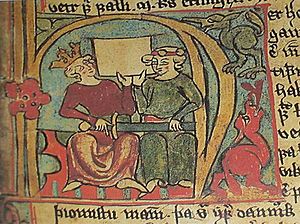
Skúli Kongsfostre, a son of Earl Tostig, came to Norway in 1067 with his half-brother Ketil Hook. King Olaf III of Norway favored Skúli and settled him at the Rein estate in Trøndelag. Skúli was known as an intelligent and handsome man who led the king's guard. He married Gudrun Nevsteinsdotter, a relative of the king.
Their great-grandson, Bård Guttormsson of Rein, was a close friend of King Sverre Sigurdsson. Bård fought alongside King Sverre and was rewarded by marrying the king's half-sister, Cecilia Sigurdsdotter. Their son, Inge Bårdsson, was born around 1185.
In 1204, Inge became King of Norway after the child-king Guttorm Sigurdsson died. Inge's half-brother, Skúli, became the leader of the army. Skúli was a fifth-generation male-line descendant of Tostig Godwinson. In 1225, Skúli's daughter, Margrete, married the new King Haakon IV. However, this did not prevent conflict. In 1239, Skúli rebelled and claimed the title of king for himself. He was killed in 1240. Through King Haakon IV and Margrete Skulesdotter, the Godwin family's lineage continues in the House of Sverre and subsequent kings of Norway.
The House of Torgar
| House of Torgar | |
|---|---|
| Noble house | |
| Parent family | House of Godwin |
| Place of origin | England |
| Founder | Ketil Hook |
| Titles | |
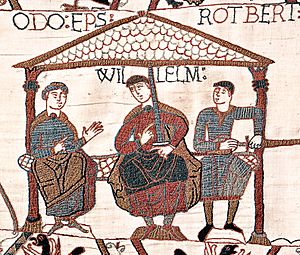
Ketil Hook, a son of Tostig Godwinson, came to Norway in 1067. King Olaf III gave Ketil the Torgar estate in Hålogaland. Ketil married a granddaughter of Hárek of Tjøtta, establishing the younger House of Torgar. This family became very influential, producing several regional governors (called lendmenn) who served Norwegian kings from 1069 until the early 14th century.
Ketil's son, William, was reportedly named in honor of William the Conqueror. The Torgar family's influence began to decline in the 14th century as foreign princes inherited the Norwegian throne. The family gradually sold their Torgar estate to the Archbishop of Nidaros, often in exchange for positions within the church administration.
Modern Royal Families
Connection to the British Royal Family
The modern British royal family, the House of Windsor, are descendants of the House of Godwin through King Harold Godwinson. The family line goes through Harold's daughter, Gytha, who married Vladimir Monomakh, Grand Prince of Kiev.
Other European Royal Families
The Godwins are also ancestors of the Danish royal family, and therefore the Greek and Norwegian royal families. King Harold Godwinson's grandson, Grand Prince Mstislav I of Kiev, had a daughter named Ingeborg. She was the mother of King Valdemar I of Denmark, from whom later Danish monarchs descend.
| Lineage to the modern Danish royal family |
|---|
|
Many other noble families in Europe during the 12th and 13th centuries also descended from the Godwins. This includes dukes and princes in Central Europe, such as the Dukes of Mecklenburg and Pomerania, and the Landgraves of Thuringia. The Godwins eventually became ancestors of the Holy Roman Emperors, starting with Frederick III.
| Lineage to the Holy Roman Emperors |
|---|
|
Coats of Arms
Even though Anglo-Saxons used symbols on banners, the idea of heraldry (family coats of arms) had not fully developed yet. So, members of the House of Godwin probably did not have official coats of arms. However, in places like the Great Hall of Winchester Castle, some coats of arms have been created and linked to members of the family.
-
Attributed arms of Godwin, Earl of Wessex and Harold, King of England from the stained-glass in the Great Hall of Winchester Castle.
-
Arms attributed to King Harold II (from Matthew Paris, 13th century).
Family Tree
This family tree shows the generally accepted male-line descendants of Wulfnoth Cild. Some known male-line descendants of Guttorm of Rein have been left out for clarity. Judith of Flanders was not the biological mother of Tostig's sons Skule and Ketil.
| Wulfnoth Cild |
|||||||||||||||||||||||||||||||||||||||||||||||||||||||||||||||||||||||||||||||||||||
| Godwin, Earl of Wessex |
Gytha Thorkelsdóttir |
||||||||||||||||||||||||||||||||||||||||||||||||||||||||||||||||||||||||||||||||||||
| Sweyn Godwinson, Earl of Somerset etc. |
Edyth Swannesha |
Harold II, King of England |
Ealdgyth of Mercia | Tostig Godwinson, Earl of Northumbria |
Judith of Flanders |
Gyrth Godwinson, Earl of East Anglia |
Leofwine Godwinson, Earl of Kent etc. |
Wulfnoth Godwinson |
Edith of Wessex |
Edward the Confessor, King of England |
|||||||||||||||||||||||||||||||||||||||||||||||||||||||||||||||||||||||||||
| Godwin | Edmund | Magnus | Gunhild | Gytha | Vladimir Monomakh, Grand Prince of Kiev |
Ulf | Harold | Skule Kongsfostre |
Gudrun Nevsteinsdotter |
Ketel Krok |
|||||||||||||||||||||||||||||||||||||||||||||||||||||||||||||||||||||||||||
| Tora Skoptesdotter |
Åsolv of Rein |
Ragnhild | Orm Kyrping |
||||||||||||||||||||||||||||||||||||||||||||||||||||||||||||||||||||||||||||||||||
| Sigrid Thorkelsdotter |
Guttorm of Rein |
Sigrid | Halkel Huk |
||||||||||||||||||||||||||||||||||||||||||||||||||||||||||||||||||||||||||||||||||
| Cecilia Sigurdsdotter |
Bård Guttormsson |
Ragnfrid Erlingsdotter |
|||||||||||||||||||||||||||||||||||||||||||||||||||||||||||||||||||||||||||||||||||
| Gyrid | Inge II, King of Norway |
Skule Bårdsson (Duke Skule) |
Ragnhild | ||||||||||||||||||||||||||||||||||||||||||||||||||||||||||||||||||||||||||||||||||
| Guttorm | Margrete Skulesdotter |
Haakon IV, King of Norway |
|||||||||||||||||||||||||||||||||||||||||||||||||||||||||||||||||||||||||||||||||||
| House of Sverre |
|||||||||||||||||||||||||||||||||||||||||||||||||||||||||||||||||||||||||||||||||||||
See also
- Royal descent
- Royal family



